If you’ve got a green thumb or are a budding gardener, this article is your secret guide to the best flowers that thrive in the arid climate of the Grand Canyon State! Arizona’s unique weather can be challenging for some plants. But fear not, as we’ve handpicked the most resilient and stunning blooms to grace your garden.

In this article, we’ll unveil a vibrant array of desert-adapted flowers that not only survive but also thrive in the harsh conditions of Arizona. From the majestic Desert Marigolds, flaunting their golden beauty, to the vivid hues of Penstemons dancing in the breeze, these flowers will add a splash of color and life to your outdoor oasis!
The Best Flowers to Plant in Arizona
1. Desert Marigold

The desert marigold is a species growing in deserts that loves sunlight.
©Barbara Ash/Shutterstock.com
The Desert Marigold is a resilient and strikingly beautiful wildflower that finds its home in the arid landscapes of Arizona. With its vibrant yellow-gold blooms, this desert gem has won the hearts of gardeners and nature enthusiasts alike.
Why it Thrives in Arizona
The Desert Marigold’s adaptability and hardiness make it well-suited for Arizona’s challenging climate. With the scorching sun and sporadic rainfall, this native perennial has evolved to endure the desert’s arid terrain. Its deep taproot enables it to access water from deeper soil layers, making it more drought-tolerant than many other plants. Additionally, the plant’s silvery-gray foliage helps reduce water loss through evaporation, providing a natural defense against dehydration.
When to Plant
For the best chance of successful growth, it’s recommended to plant Desert Marigold seeds in the fall or early spring. These times coincide with the cooler temperatures and the occasional rains that aid in seed germination and early root development. They establish their roots before the harsh summer heat sets in. Thus, the plants become more resilient and capable of withstanding the long, hot days ahead.
When to Expect Blooms
Once the Desert Marigold takes root and establishes itself, you can look forward to an impressive display of blooms during the warmer months. Typically, the flowering season spans from late spring through early fall. The peak bloom period occurs in late spring to early summer when the plant showcases an abundance of cheerful yellow-gold flowers, creating a breathtaking spectacle in the desert landscape.
2. Globe Mallow
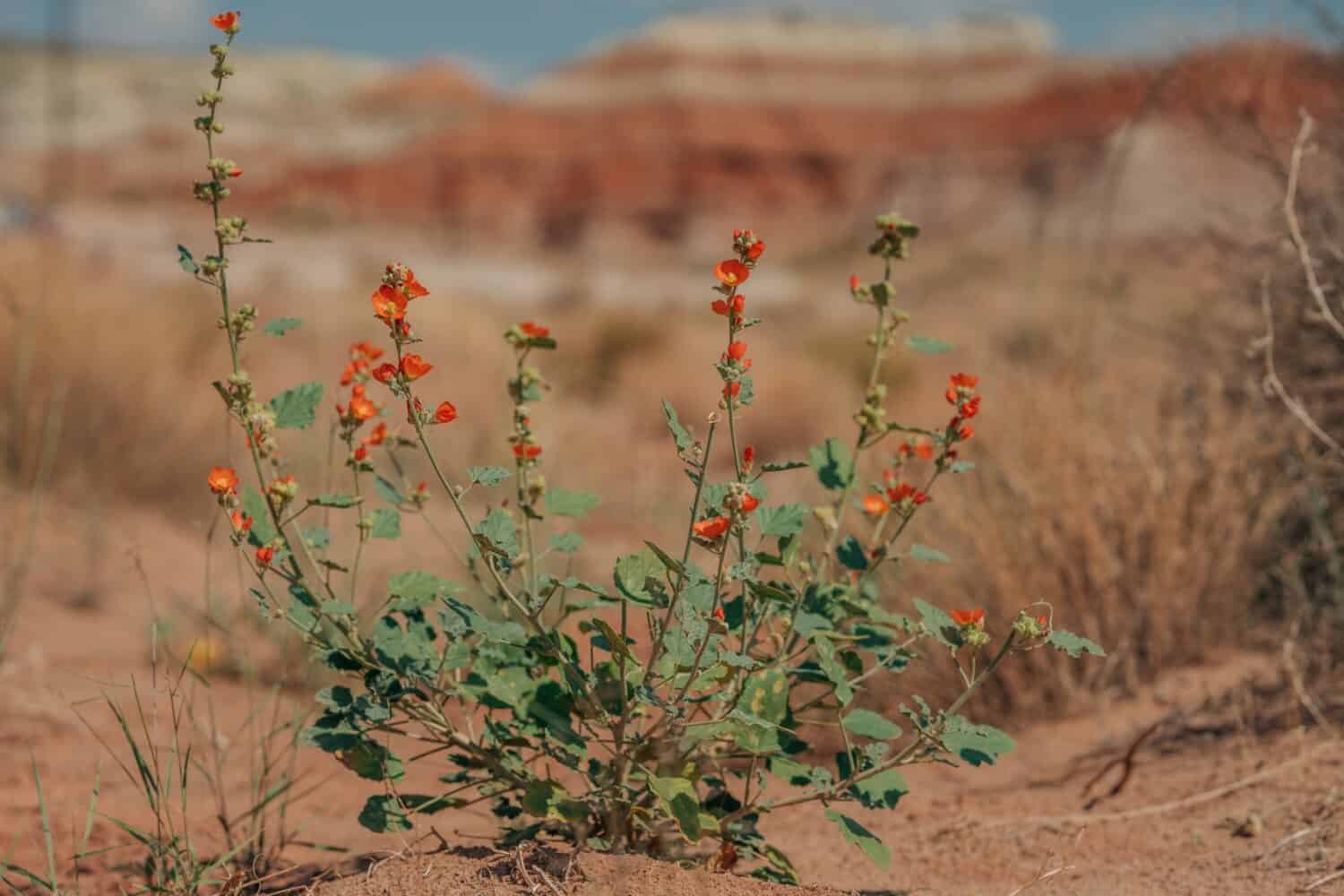
Desert Globe Mallow can be found growing wild in the Sonoran Desert.
©HannaTor/Shutterstock.com
The Globe Mallow is a vibrant and captivating flowering plant that thrives in the arid regions of Arizona. With its cheerful blooms and drought-resistant nature, the Globe Mallow has become a beloved addition to gardens and landscapes across the state.
Why it Thrives in Arizona
The Globe Mallow is well-adapted to Arizona’s challenging climate, making it a hardy choice for desert gardens. Its deep-rooted system allows it to access water from deeper soil layers, enhancing its drought tolerance. The silvery-gray foliage of the Globe Mallow also plays a crucial role in conserving moisture by reducing water loss through evaporation. Additionally, this native perennial has evolved to withstand intense heat and prolonged periods of dryness, making it a natural fit for arid terrain.
When to Plant
To give the Globe Mallow the best chance of thriving, planting is ideally done in the fall or early spring in Arizona. These seasons offer milder temperatures, providing an optimum environment for seed germination and root establishment. By getting a head start before the scorching summer heat arrives, the Globe Mallow can build strong roots, ensuring better survival and growth during the hotter months.
When to Expect Blooms
Once the Globe Mallow establishes itself, you can eagerly anticipate a profusion of blooms gracing your garden or landscape. The flowering season typically spans from late spring to early fall in Arizona. The plant showcases its delightful, hibiscus-like flowers in various shades of pink, orange, or lavender, adding a burst of color to the desert scenery. The peak blooming period occurs during late spring and early summer when the Globe Mallow puts on its most splendid floral display.
3. Penstemon
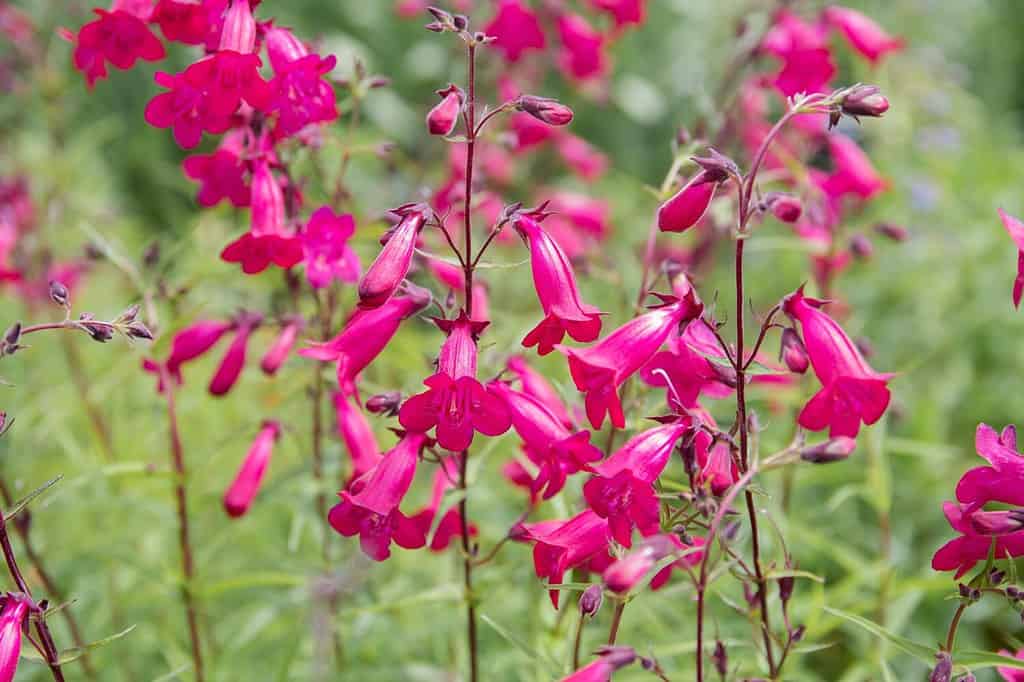
Penstemons are known for their unique look.
©litts/Shutterstock.com
The Penstemon, also known as Beardtongue, is a stunning and diverse flowering plant that flourishes in the arid landscapes of Arizona. With its array of vibrant colors and ability to withstand the desert’s challenges, the Penstemon has become a favorite among gardeners and nature enthusiasts.
Why it Thrives in Arizona
The Penstemon is well-suited for Arizona’s harsh conditions, owing to its adaptability and hardiness. These native perennials have evolved to survive the desert’s extreme temperatures and limited water availability. Their deep root systems enable them to tap into water sources deep in the soil, making them drought-tolerant and resilient during extended dry spells. Furthermore, the Penstemon’s slender leaves minimize water loss through transpiration, allowing it to thrive in the arid terrain.
When to Plant
To ensure the successful growth of Penstemons, planting should ideally occur in the fall or early spring in Arizona. During these seasons, the temperatures are milder, providing an optimal environment for root development and establishment. By giving the plants a head start before the scorching summer arrives, they can adapt better to the challenging conditions and establish themselves.
When to Expect Blooms
Once the Penstemon takes root and settles in, a spectacular display of blooms awaits. The flowering period for Penstemons in Arizona generally spans from late spring to early summer. During this time, the plants showcase a breathtaking array of colorful tubular flowers, ranging from vibrant reds and pinks to purples and blues. The peak bloom period occurs in late spring when the Penstemon bedecks the desert landscape with its radiant hues.
4. Mexican Gold Poppy

These poppies can handle the harsh Arizona heat.
©alybaba/Shutterstock.com
The Mexican Gold Poppy is a breathtaking wildflower that thrives in the arid landscapes of Arizona. With its sunny yellow blossoms and ability to withstand the desert’s harsh conditions, this vibrant poppy has become an iconic symbol of beauty in the region. Let’s explore why the Mexican Gold Poppy grows well in Arizona, the ideal time for planting, and when to witness its dazzling bloom.
Why it Grows Well in Arizona
The Mexican Gold Poppy is well-suited for Arizona’s desert environment due to its exceptional adaptability and hardiness. Native to the arid regions of California and Mexico, this wildflower has evolved to cope with the arid conditions of the southwestern United States. The poppy’s ability to thrive in sandy and well-draining soil, coupled with its drought-tolerant nature, makes it perfectly suited to the water-scarce landscapes of Arizona. Additionally, the ample sunlight in the region promotes healthy growth and vibrant blooms.
When to Plant
For successful growth, it is best to plant Mexican Gold Poppy seeds in the fall in Arizona. Planting during this time allows the seeds to establish themselves before the winter, ensuring they are well-rooted for springtime growth. Fall planting takes advantage of the cooler temperatures, which provide an optimal environment for seed germination and initial root development.
When to Expect Blooms
Once established, the Mexican Gold Poppy puts on a spectacular show of golden blooms, transforming the desert into a sea of yellow hues. The blooming period typically occurs in the early spring, around March and April, in Arizona. The wildflower’s bright yellow flowers, with their delicate papery petals, create a breathtaking sight against the arid landscape, attracting pollinators and enchanting all who behold them.
5. Desert Bluebells
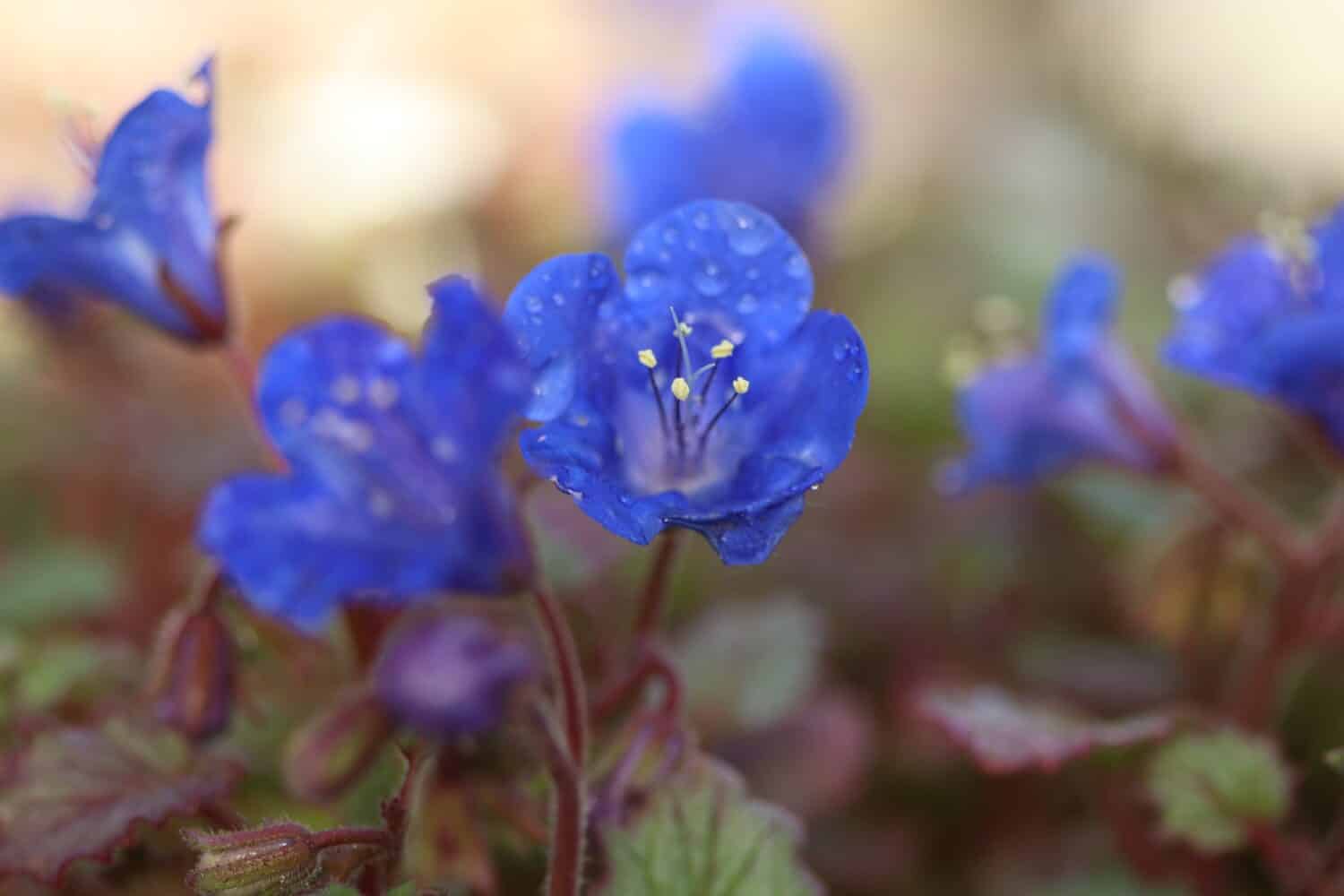
Desert Bluebells can add a pop of color to any garden.
©Whats in a name/Shutterstock.com
The Desert Bluebells are a captivating wildflower that thrives in the arid landscapes of Arizona. With their striking blue bell-shaped blooms and resilience to desert conditions, these delicate flowers have become a cherished sight in the region. Let’s explore why Desert Bluebells flourish in Arizona, the best time for planting, and when to expect their stunning display of blooms.
Why it Grows Well in Arizona
Desert Bluebells have adapted exceptionally well to the arid climate of Arizona, making them well-suited for the region’s challenging environment. These native annuals have evolved to conserve water efficiently, making them drought-tolerant and capable of withstanding extended periods of dryness. Their deep taproots enable them to access water from lower soil layers, providing an advantage in water-scarce conditions. Additionally, the abundance of sunlight in Arizona supports their vigorous growth and vibrant flowering.
When to Plant
For successful growth, it is ideal to plant Desert Bluebell seeds in the fall or late winter in Arizona. Planting during these periods allows the seeds to germinate and establish themselves before the scorching summer heat arrives. The milder temperatures in the fall and late winter provide an optimal environment for seed germination and root development, ensuring robust and healthy plants when the blooming season approaches.
When to Expect Blooms
Once settled in, Desert Bluebells put on a stunning display of sky-blue blooms, transforming the desert landscape into a sea of vibrant colors. The blooming season typically occurs in the spring, from March to April, in Arizona. During this time, the wildflowers blanket the arid terrain with their delicate bell-shaped flowers, attracting bees and other pollinators, and adding a touch of natural splendor to the desert scenery.
6. Arizona Blanket Flower
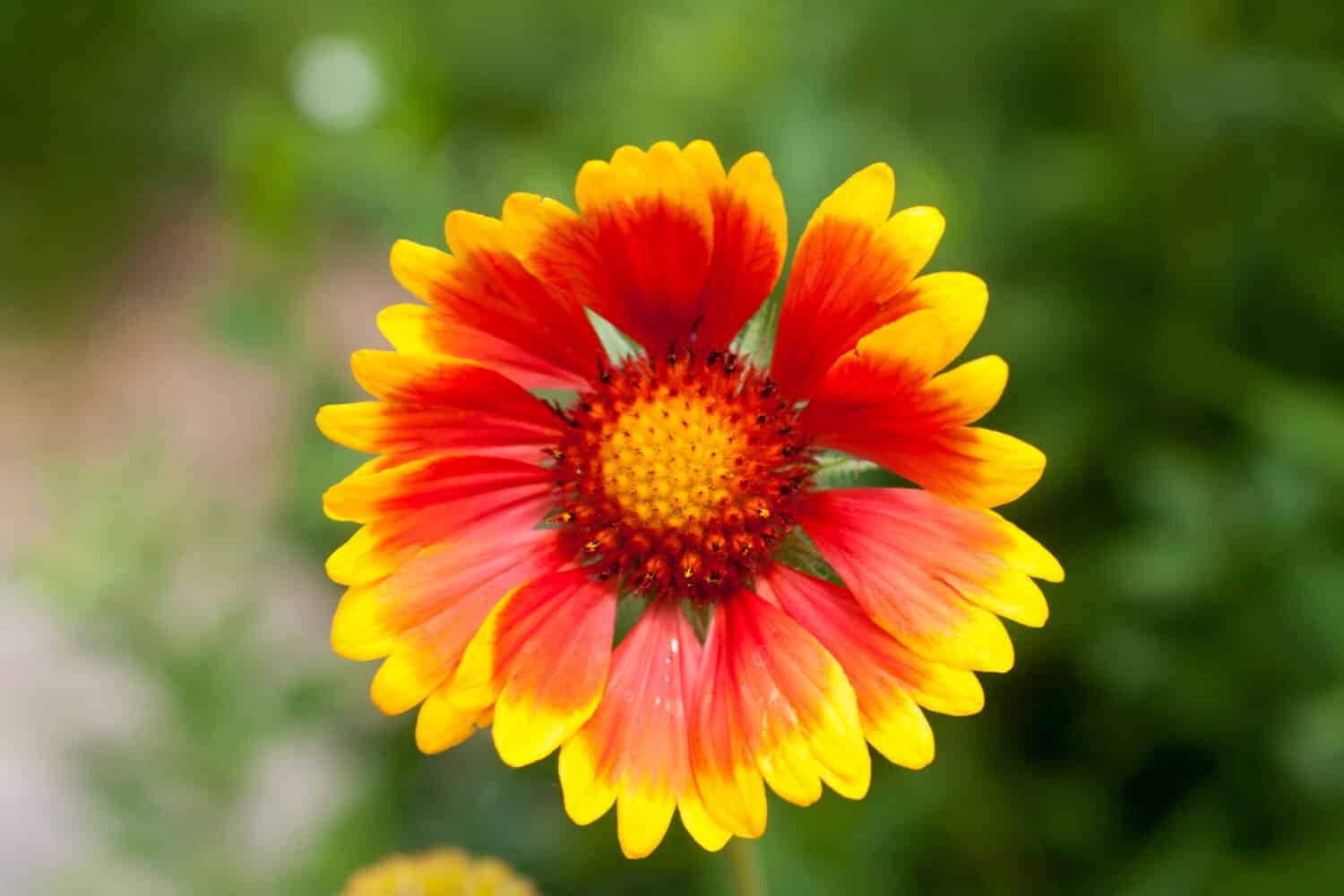
These vibrant blanket flowers have a particularly stunning blooming season.
©Oleksandr Pantielieiev/Shutterstock.com
The Arizona Blanket Flower is a stunning and resilient wildflower that flourishes in the arid landscapes of Arizona. With its vibrant and multi-colored blossoms, this native perennial has become a beloved addition to gardens and natural areas in the region. Let’s explore why the Arizona Blanket Flower thrives in Arizona, the ideal time for planting, and when to witness its delightful bloom.
Why it Grows Well in Arizona
The Arizona Blanket Flower is well-suited for Arizona’s desert environment due to its exceptional adaptability and hardiness. This wild beauty has evolved to withstand the region’s harsh conditions, including intense heat and limited water availability. Its deep root system allows it to draw water from lower soil layers, enhancing its drought tolerance. Additionally, the Blanket Flower’s ability to bask in full sunlight makes it a perfect fit for the sun-drenched landscapes of Arizona.
When to Plant
For optimal growth, it is best to plant Arizona Blanket Flower seeds in the spring or fall in Arizona. Planting during these periods allows the seeds to germinate and establish themselves in cooler temperatures, which creates a favorable environment for root development. By planting at the right time, the Blanket Flower can establish strong roots, ensuring a robust and thriving plant when the blooming season approaches.
When to Expect Blooms
Once the Arizona Blanket Flower settles in, it puts on a spectacular show of color, transforming the desert into a vivid tapestry. The blooming season typically occurs from late spring to early fall in Arizona. During this period, the Blanket Flower showcases its stunning daisy-like flowers in a range of colors, including red, orange, and yellow. This vibrant display attracts pollinators and adds a touch of natural splendor to the arid landscape.
7. Desert Zinnia
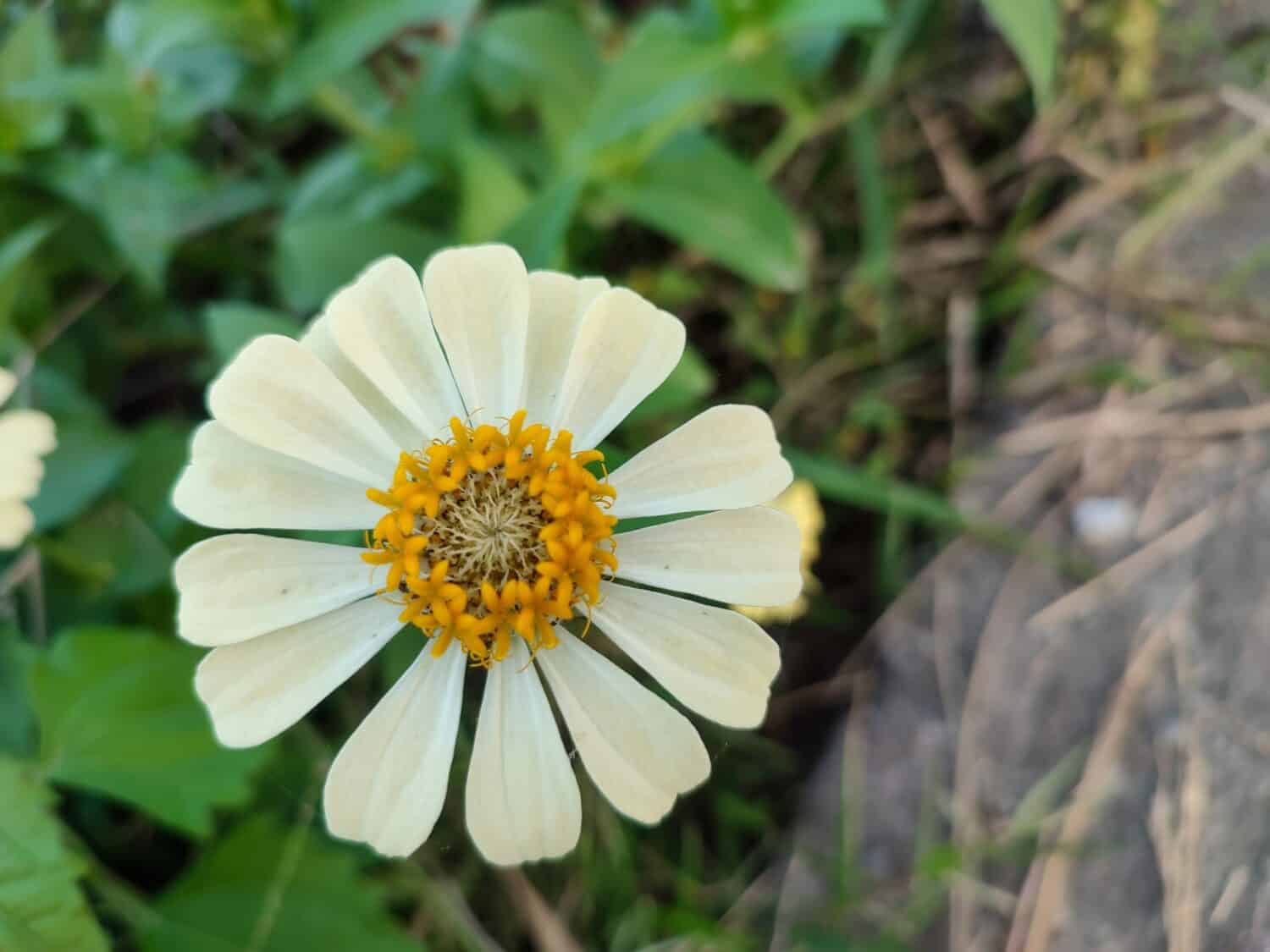
Desert Zinnias are a more fragile flower than most, but they can still handle the heat.
©Piohamidah/Shutterstock.com
The Desert Zinnia is a delightful and tenacious wildflower that flourishes in the arid landscapes of Arizona. With its bright yellow blooms and ability to endure the desert’s harsh conditions, this native perennial has earned a special place in the hearts of nature enthusiasts. Let’s explore why the Desert Zinnia thrives in Arizona, the optimal time for planting, and when to witness its striking blooms.
Why it Grows Well in Arizona
The Desert Zinnia is well-adapted to Arizona’s challenging climate, making it an excellent fit for the region’s arid soil. This hardy wildflower has evolved to conserve water effectively, enabling it to withstand prolonged periods of drought. Its deep root system allows it to access water from lower soil layers, enhancing its ability to survive in water-scarce conditions. Additionally, the Desert Zinnia’s ability to thrive in full sunlight contributes to its successful growth in the sun-drenched landscapes of Arizona.
When to Plant
For optimal growth, it is best to plant Desert Zinnia seeds in the spring in Arizona. Planting during this season takes advantage of the warmer temperatures, creating an ideal environment for seed germination and root establishment. The milder weather and ample sunlight during springtime provide the perfect conditions for the Desert Zinnia to grow strong and healthy.
When to Expect Blooms
Once settled in, the Desert Zinnia bursts into a brilliant display of yellow blooms, adorning the desert landscape with its charm. The blooming season typically occurs from late spring to early fall in Arizona. During this period, the Desert Zinnia showcases its daisy-like flowers in a sunny yellow hue, attracting pollinators and brightening the arid terrain with its delightful blossoms.
8. Desert Sage

Desert sage is a crucial flower for encouraging pollination.
©iStock.com/Jared Quentin
The Desert Sage is an aromatic wildflower that thrives in the arid landscapes of Arizona. With its striking purple blooms and delightful fragrance, this native perennial has become a cherished addition to gardens and natural areas in the region. Let’s explore why the Desert Sage grows well in Arizona, the ideal time for planting, and when to expect its beautiful blossoms.
Why it Grows Well in Arizona
The Desert Sage is well-suited for Arizona’s arid climate, making it a resilient and attractive plant for the region’s landscapes. This native wildflower has evolved to withstand harsh desert conditions, including hot temperatures and limited water availability. Its deep root system allows it to access water from lower soil layers, enhancing its drought tolerance. Additionally, the Desert Sage’s silvery-gray foliage helps reduce water loss through transpiration, enabling it to thrive in water-scarce environments. The ample sunlight in Arizona further supports its vigorous growth and enhances the intensity of its purple blooms.
When to Plant
For successful growth, it is best to plant Desert Sage seeds or transplants in the fall or spring in Arizona. Planting during these seasons provides the plant with an advantageous start, as the milder temperatures promote root establishment and growth. By planting at the right time, the Desert Sage can adapt better to the environment and become well-established before the summer heat sets in.
When to Expect Blooms
Once settled in, the Desert Sage unveils its show-stopping display of purple blooms, adding a touch of elegance to the desert landscape. The blooming season typically occurs from late spring to early summer in Arizona. During this period, the Desert Sage showcases its attractive tubular flowers, which attract hummingbirds and butterflies, and fills the air with a delightful fragrance.
Summary of the Best Flowers to Plant in Arizona: 8 Flowers That Love the Heat
| # | Flower | Best Spot |
|---|---|---|
| 1 | Desert Marigold | Full sun to partial shade |
| 2 | Globe Mallow | Full sun |
| 3 | Penstemon | Full sun to partial shade |
| 4 | Mexican Gold Poppy | Full sun |
| 5 | Desert Bluebells | Full sun |
| 6 | Arizona Blanket Flower | Full sun |
| 7 | Desert Zinnia | Full sun |
| 8 | Desert Sage | Full sun |
Thank you for reading! Have some feedback for us? Contact the AZ Animals editorial team.








